Overview
This article provides a structured approach to selecting the ideal store flooring for your business. It highlights five essential steps:
- Understanding your business needs
- Exploring various flooring options
- Determining your budget considerations
- Evaluating installation and maintenance requirements
- Considering aesthetic appeal
By making informed decisions based on these factors, you can significantly enhance operational efficiency and ensure alignment with your brand identity.
Introduction
Choosing the right flooring for a business is not merely a design decision; it can significantly impact operations and customer experience. With a multitude of options available, each presenting its own set of advantages and challenges, the decision-making process can feel overwhelming. This guide simplifies the selection process by outlining essential steps and considerations, highlighting how the right choice can enhance brand identity and operational efficiency.
What factors should a business owner prioritize to ensure that their flooring aligns with both practical needs and aesthetic goals?
Understand Your Business Needs and Goals
Begin by thoroughly assessing your business's specific needs. Key factors to consider include the nature of your services, anticipated foot traffic, and the desired atmosphere. A retail area with high foot traffic, for instance, requires sturdy surface options, while a boutique may emphasize aesthetic appeal. Engaging your team is crucial; gather their insights on essential features such as slip resistance and ease of cleaning. Document these requirements meticulously to guide your flooring exploration.
Data indicates that companies evaluating their operational requirements can attain considerable enhancements. For example, Frontier Electronic Systems achieved a 1400% return on investment by adopting a systematic method to their operations. Furthermore, the lighting enhancement at Foothills Brewing led to a , emphasizing the significance of making informed choices based on particular requirements.
- Outline your main commercial activities and their potential influence on surface selection.
- Consult with personnel to acquire varied viewpoints on surface requirements.
- Prioritize your requirements based on operational demands and customer experience.
As Scott Jernigan, VP of Business Development, emphasizes, creating a conducive work environment is essential for productivity. By understanding your business goals and needs, you can choose surfaces that not only meet aesthetic standards but also enhance operational efficiency.
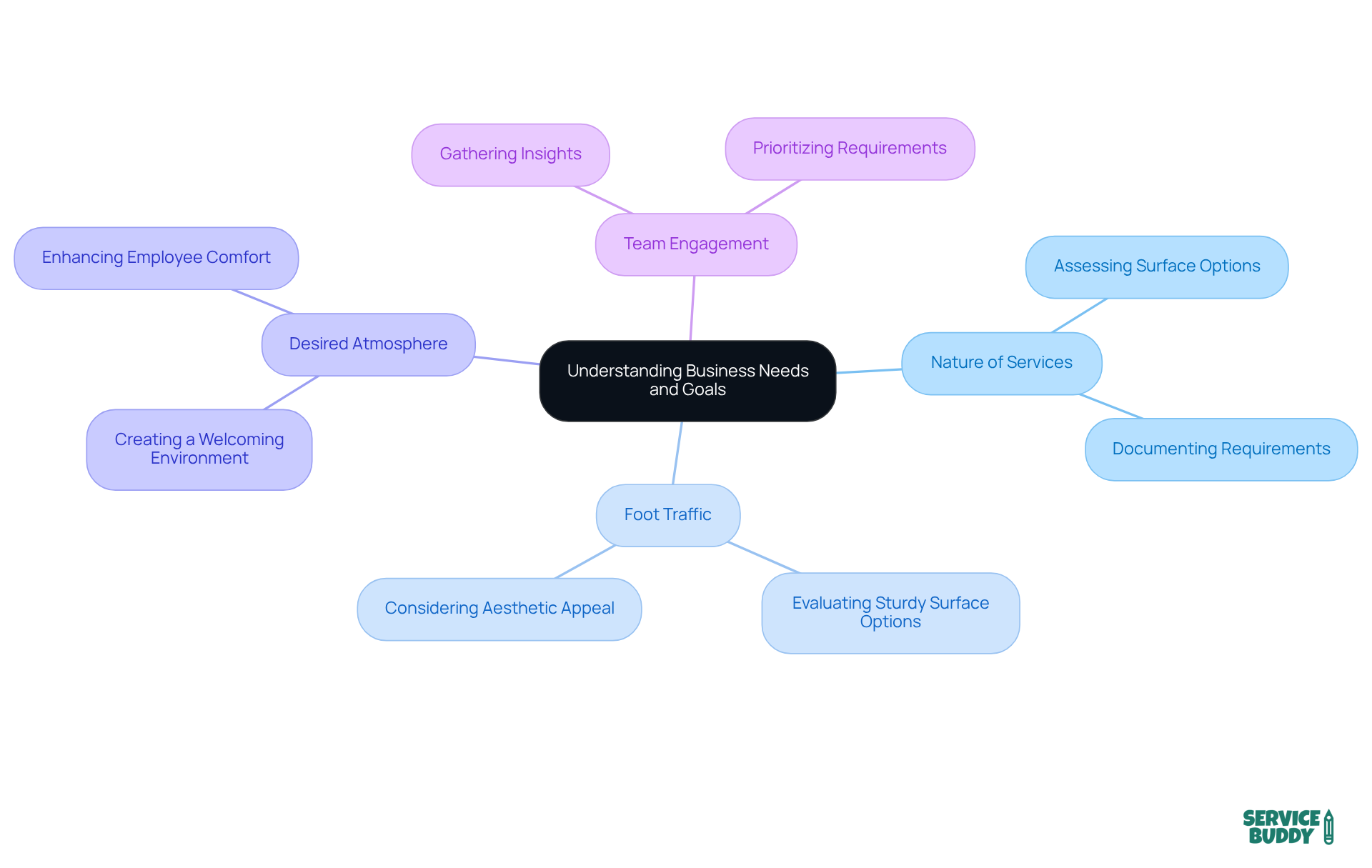
Explore Different Flooring Options: Pros and Cons
Investigate the various kinds of store flooring available for commercial application. Understanding your options for store flooring is crucial for making informed decisions that align with your business needs. Common choices include:
- Hardwood: Known for its durability and aesthetic appeal, hardwood can elevate the look of any space. However, store flooring tends to be expensive and requires regular maintenance to preserve its beauty.
- Laminate: A cost-effective alternative for store flooring, laminate is easy to install and offers a wide range of styles. Yet, it may not match the durability of hardwood when considering store flooring options over time.
- Tile: Renowned for its water resistance and ease of cleaning, tile is ideal for store flooring in high-moisture areas. Keep in mind, though, that store flooring can feel cold and hard underfoot, which may not be suitable for all environments.
- Store flooring: Providing comfort and sound absorption, store flooring can enhance the warmth of a space. However, store flooring typically requires more frequent cleaning to maintain its appearance.
To effectively navigate your choices, consider these action steps:
- Create a comparison chart listing each type of store flooring along with its advantages and disadvantages. This will help clarify your store flooring options.
- Reflect on how each option aligns with your previously identified needs for store flooring. Are you prioritizing aesthetics, durability, or the maintenance of store flooring?
- Consult with suppliers or experts to gain insights on the performance and longevity of store flooring materials. Their expertise can guide you in making the best choice for your store flooring.
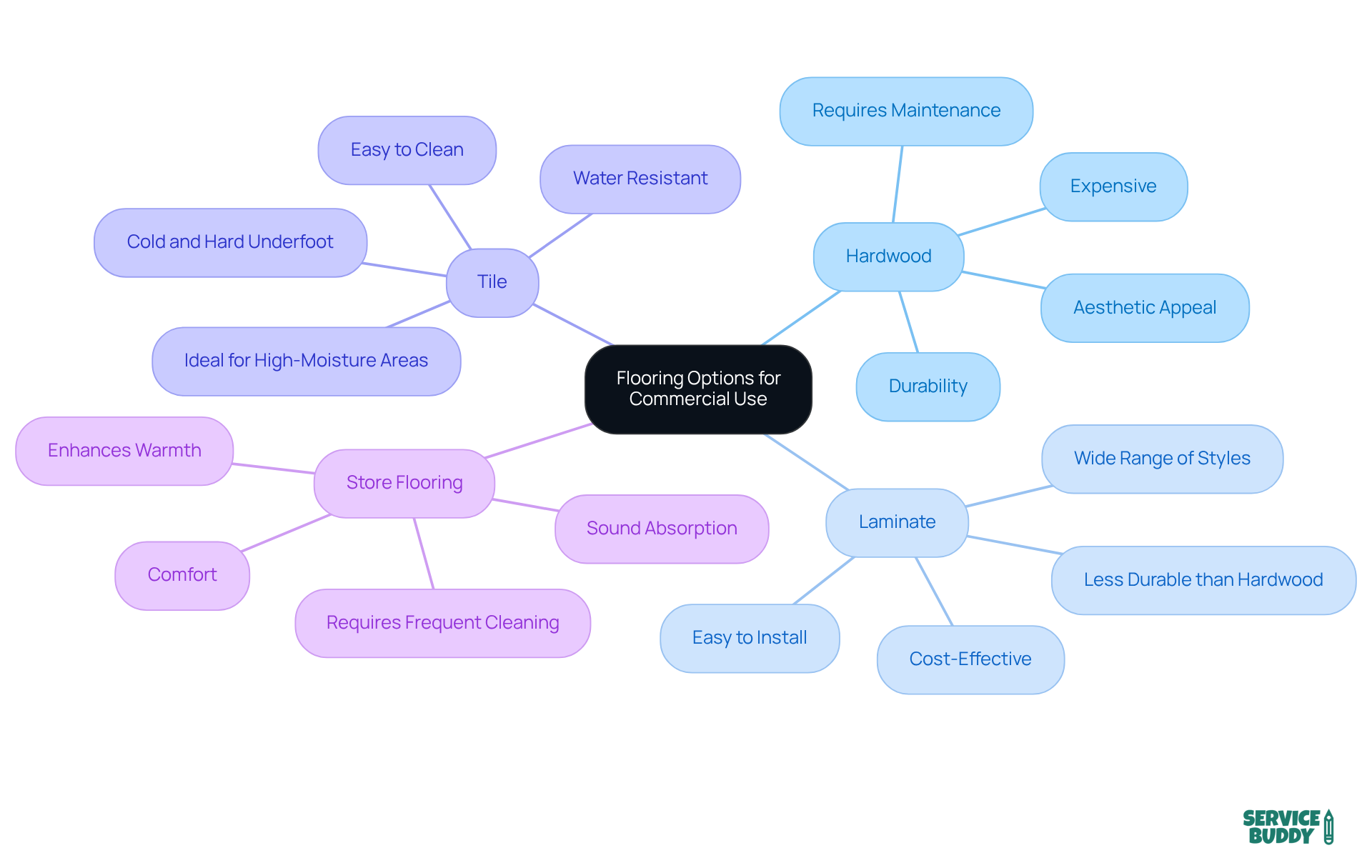
Determine Your Budget and Cost Considerations
Creating a budget for your flooring project is essential, encompassing not only the initial purchase and installation costs but also long-term maintenance and replacement expenses. Here are key steps to guide you:
- Calculate Total Area: Measure the total area needing coverage to determine the amount required. Multiply the width by the length to get the , and always purchase at least 10% extra to account for repairs and potential mismatches, as recommended by industry experts.
- Get Estimates: Obtain multiple quotes for each type of surface option to ensure competitive pricing. This will assist you in comprehending the variety of expenses related to various materials and installation techniques.
- Consider Installation Expenses: Installation expenses can differ significantly based on the kind of material selected. For instance, while vinyl may be more affordable, hardwood and specialized materials can significantly increase your budget. Be sure to include expenses for demolition, subfloor preparation, and labor in your calculations.
- Consider Long-Term Savings: Assess the long-term upkeep expenses linked to each type of surface. Investing in superior materials may involve a larger initial expense but can result in savings over time due to decreased maintenance and replacement requirements. For instance, long-lasting surface choices can endure wear and tear, reducing the necessity for regular replacements. According to a case study, choosing higher-quality materials can be financially responsible in the long term.
- Include a Contingency Budget: Set aside a contingency budget of 10-20% to cover unexpected expenses that may arise during the project. This ensures that you are prepared for any unforeseen costs, such as additional repairs or changes in material prices.
By thoughtfully evaluating these elements, you can develop a budget that not only addresses your current requirements but also fosters the long-term success of your investment. Moreover, using tools such as the Feature Flooring Visualizer Tool can assist you in simulating various surface choices, supporting your budgeting process.
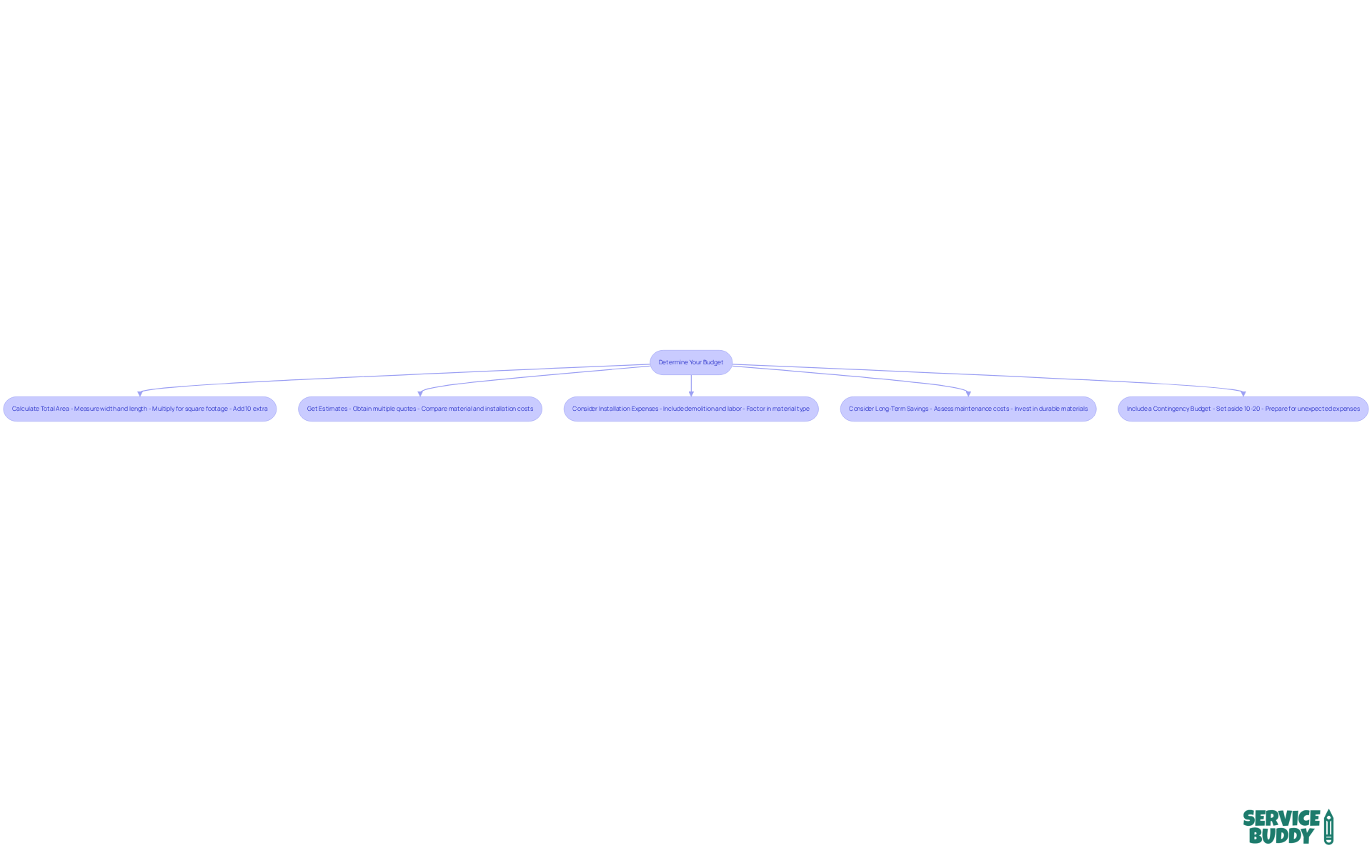
Evaluate Installation and Maintenance Requirements
Different surface types come with varying installation and maintenance requirements, which are crucial for store flooring business owners to consider. For instance, some materials necessitate professional installation, while others are more conducive to DIY approaches. Additionally, it is important to evaluate how often the store flooring will need cleaning or replacement to ensure optimal performance.
To effectively navigate these considerations, follow these action steps:
- Investigate the installation procedures for each type of surface. Determine whether to engage professionals or manage the installation independently.
- Establish a maintenance timetable tailored to the specific surface type and your business activities.
- Account for any potential downtime during installation and plan accordingly to minimize disruption.
By understanding these factors, you can make informed decisions that enhance your operational efficiency and support your business's success through effective store flooring.
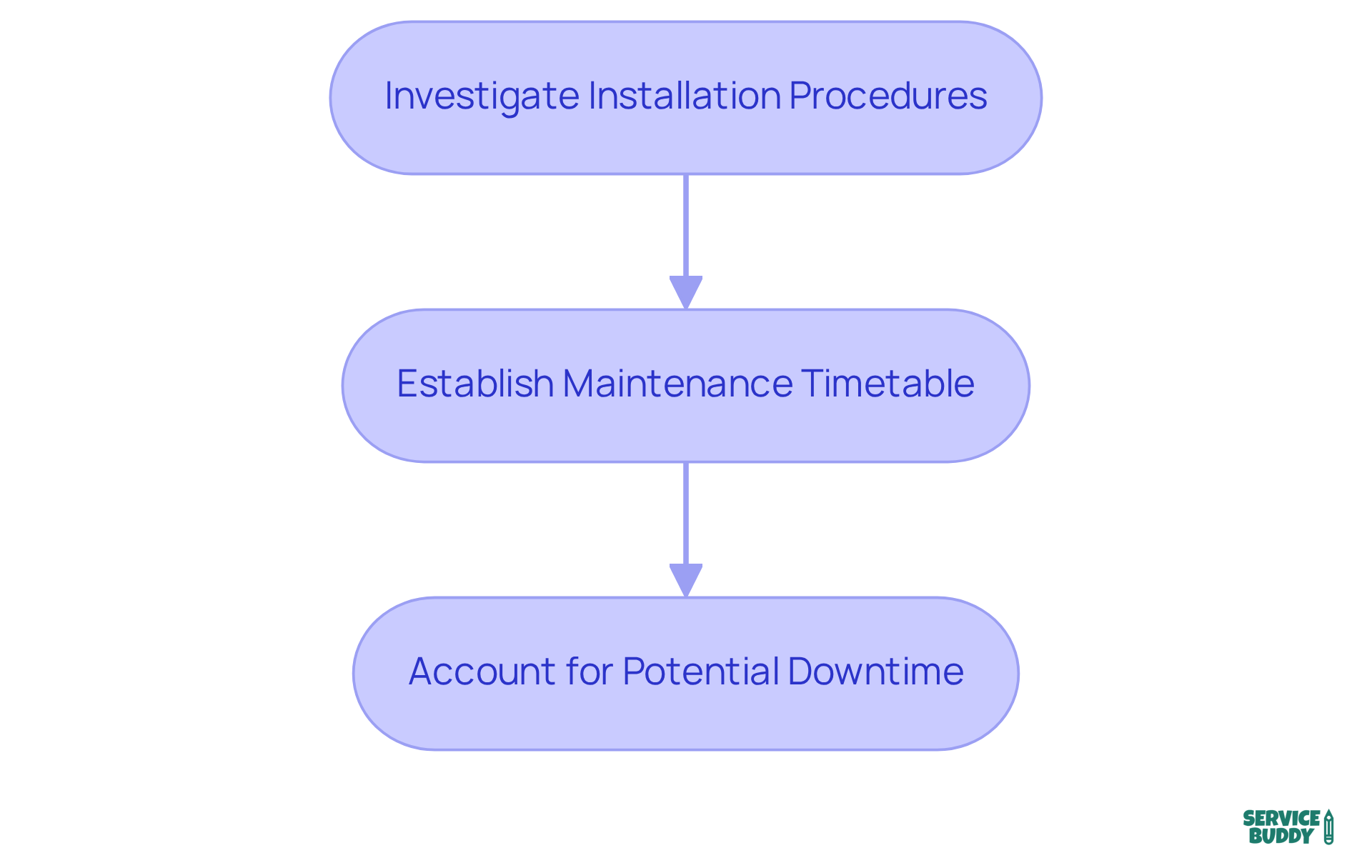
Consider Aesthetic Appeal and Brand Alignment
Ultimately, reflect on how the surface will embody your brand's identity and captivate your target customers. The right surface not only enhances the ambiance of your space but also fosters a welcoming environment.
To effectively implement this, consider the following action steps:
- Gather inspiration from competitors and industry leaders to observe how they utilize store flooring to elevate their brand.
- Select colors and materials that resonate with your brand's image and values.
- Test samples in your space to evaluate their appearance under various lighting conditions and settings before reaching a final decision.
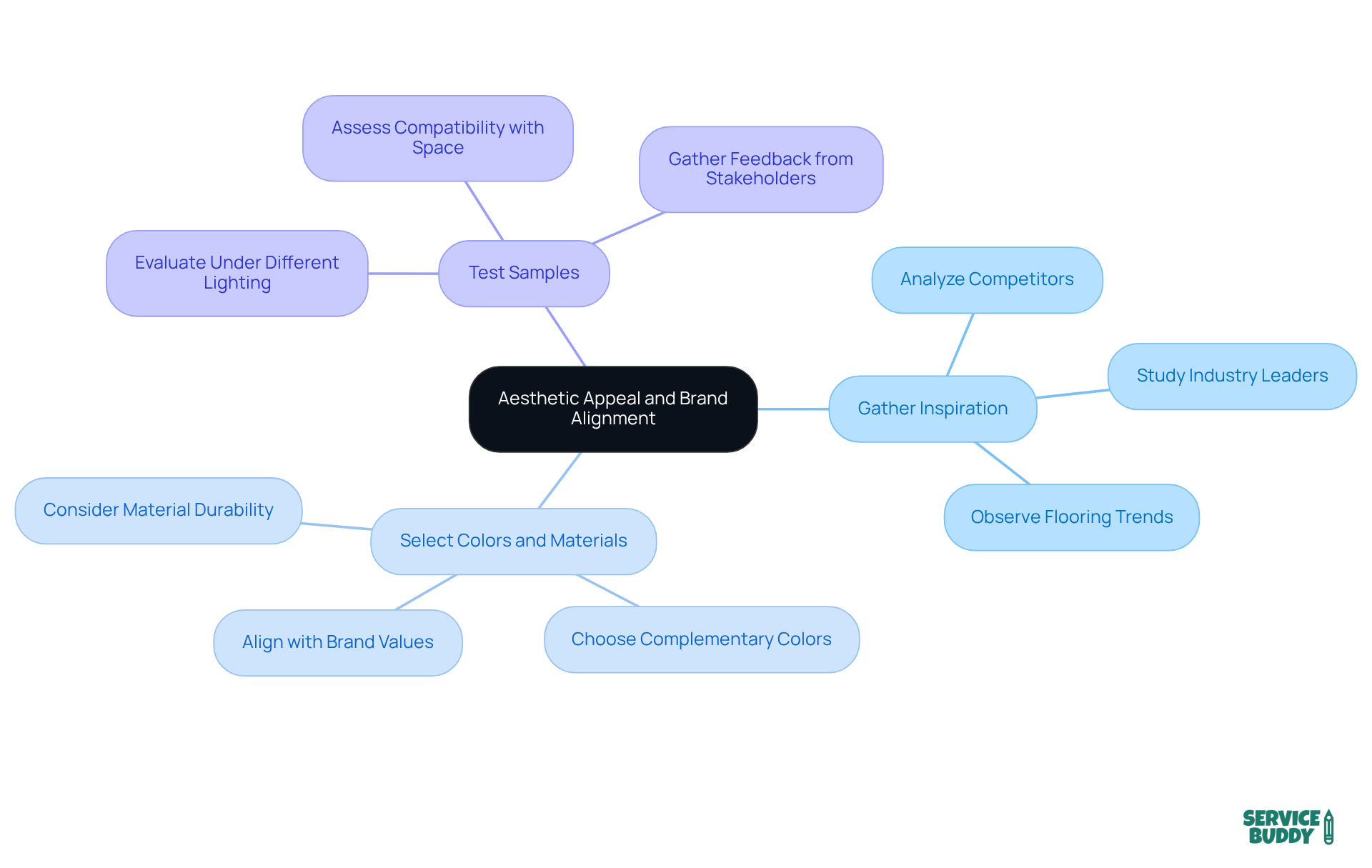
Conclusion
Choosing the right flooring for a business is a multifaceted decision that significantly impacts both operational efficiency and customer experience. Understanding specific business needs, exploring various flooring options, establishing a budget, evaluating installation and maintenance requirements, and considering aesthetic appeal are crucial steps. By making informed choices that align with their goals, businesses can enhance their brand identity.
Key insights from this guide underscore the importance of assessing operational needs and customer expectations when selecting flooring. From the durability of hardwood to the affordability of laminate, each flooring type presents distinct advantages and challenges. Moreover, budgeting for both initial costs and long-term maintenance is essential for ensuring a sustainable investment. Engaging with team members and industry experts can provide valuable perspectives, leading to a more effective decision-making process.
Ultimately, the flooring choice should not only meet practical requirements but also resonate with the brand's identity and create an inviting atmosphere for customers. As businesses look towards 2025 and beyond, prioritizing these considerations will foster a more engaging and productive environment. Taking the time to evaluate all aspects of flooring selection will yield dividends in enhancing operational success and reinforcing a strong brand image.
Frequently Asked Questions
What should I consider when assessing my business's flooring needs?
When assessing your business's flooring needs, consider the nature of your services, anticipated foot traffic, and the desired atmosphere. Engage your team to gather insights on essential features like slip resistance and ease of cleaning, and document these requirements to guide your flooring exploration.
How can evaluating operational requirements benefit my business?
Evaluating operational requirements can lead to significant enhancements for your business. For example, Frontier Electronic Systems achieved a 1400% return on investment by adopting a systematic approach to their operations, and Foothills Brewing saw a 68% decrease in yearly operational expenses through lighting improvements.
What are the common types of flooring options available for commercial applications?
Common types of flooring options for commercial applications include hardwood, laminate, tile, and store flooring. Each type has its own pros and cons that should be considered based on your specific needs.
What are the advantages and disadvantages of hardwood flooring?
Hardwood flooring is known for its durability and aesthetic appeal, elevating the look of any space. However, it is typically expensive and requires regular maintenance to preserve its beauty.
What are the benefits and drawbacks of laminate flooring?
Laminate flooring is a cost-effective alternative that is easy to install and offers a wide range of styles. However, it may not be as durable as hardwood over time.
Why is tile flooring a good option for certain commercial environments?
Tile flooring is ideal for high-moisture areas due to its water resistance and ease of cleaning. However, it can feel cold and hard underfoot, which may not be suitable for all environments.
What are the characteristics of store flooring?
Store flooring provides comfort and sound absorption, enhancing the warmth of a space. However, it typically requires more frequent cleaning to maintain its appearance.
How can I effectively compare different flooring options?
To compare different flooring options, create a comparison chart listing each type of flooring along with its advantages and disadvantages. Reflect on how each option aligns with your identified needs, and consult with suppliers or experts for insights on performance and longevity.
What role does employee input play in selecting flooring?
Consulting with personnel to acquire varied viewpoints on surface requirements is crucial. Their insights can help prioritize needs based on operational demands and customer experience, ultimately leading to better flooring choices.




